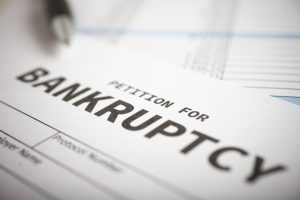Go to Page Section:
- Understanding Bankruptcy and Its Types
- Step 1: Assess Your Financial Situation
- Step 2: Credit Counseling
- Step 3: Choose the Right Type of Bankruptcy
- Step 4: Filing the Bankruptcy Petition
- Step 5: The Automatic Stay
- Step 6: Meeting of Creditors
- Step 7: Completing a Debtor Education Course
- Step 8: Discharge of Debts
Financial hardship can lead to tough decisions, one of which might be filing for bankruptcy.
This process can seem daunting and is often filled with misconceptions.

Bankruptcy is designed to allow individuals and businesses to reset their financial status by restructuring or eliminating debts altogether.
Understanding the bankruptcy process is vital for anyone considering this significant step.
It involves several stages, each requiring careful consideration and, often, legal guidance.
This article aims to shed light on these steps, helping you navigate the complexities of bankruptcy with clarity and confidence.
Understanding Bankruptcy and Its Types
Bankruptcy is a legal recourse for those overwhelmed by debt, offering a structured path toward managing or clearing financial obligations.
In the United States, the most common forms for individuals are Chapter 7 and Chapter 13 bankruptcy.
Chapter 7, known for its liquidation process, can erase most debts but might require you to give up some assets.
Chapter 13, however, focuses on debt repayment plans, allowing you to retain your assets.
Businesses facing financial distress typically look towards Chapter 11, which facilitates a reorganization of debts.
Deciding which path to take often starts with consulting bankruptcy law services, ensuring you choose the option best suited to your situation.
Step 1: Assess Your Financial Situation
A comprehensive assessment of your financial situation is the crucial first step in the bankruptcy process.
This involves listing all your debts, including credit cards, loans, medical bills, and other obligations, alongside your assets, income, and monthly expenses.
Understanding the full scope of your financial status helps determine if bankruptcy is the right option or if alternative debt relief methods could be more suitable.
Step 2: Credit Counseling
Mandatory credit counseling is a prerequisite to ensure that every individual filing for bankruptcy has considered all available options.
This session, conducted by an approved agency, provides an overview of alternatives to bankruptcy and helps you understand the potential impacts of this decision on your financial health.
Step 3: Choose the Right Type of Bankruptcy
Selecting the right type of bankruptcy is a pivotal decision that hinges on various factors, including income, debts, and whether you want to keep certain assets.
Chapter 7 might offer a quick resolution but requires qualifying through a means test and could result in losing some property.
Chapter 13 suits those with regular income who seek to retain their assets while repaying debts over time.
Step 4: Filing the Bankruptcy Petition
Filing a bankruptcy petition formally declares your intention to seek relief from your debts.
This document-intensive step requires meticulous attention to detail, which involves compiling and presenting comprehensive information about your financial situation.
The accuracy and completeness of your filing are critical to the success of your case, underscoring the importance of thorough personal diligence or the assistance of a knowledgeable attorney.
Step 5: The Automatic Stay
Filing a bankruptcy petition triggers an automatic stay, a powerful legal provision that immediately halts most collection efforts against you.
This means creditors must cease all harassing calls, lawsuits, and any attempt to repossess property or foreclose on your home, providing you with temporary relief as your bankruptcy case proceeds.
Step 6: Meeting of Creditors
The meeting of creditors, or the 341 meeting, is a mandatory part of the bankruptcy process where creditors can ask questions about your finances and the filed documents.
While facing your creditors may seem intimidating, this meeting is usually straightforward.
Your bankruptcy trustee will lead the session, and your lawyer will be there to assist you.
Step 7: Completing a Debtor Education Course
Following the meeting of creditors, completing a debtor education course is your next step.
This educational requirement will equip you with the financial management skills necessary to avoid future financial pitfalls.
Covering budgeting, responsible credit use, and financial planning, this course is instrumental in laying the foundation for a more secure financial future post-bankruptcy.
Step 8: Discharge of Debts
The culmination of the bankruptcy process for many is the discharge of debts.
This legally releases you from personal liability for specific debts, effectively marking the completion of your bankruptcy case.
In Chapter 7, this can happen relatively quickly, whereas, in Chapter 13, discharge occurs after you complete the agreed-upon repayment plan.
Navigating the bankruptcy process can provide financial relief and a fresh start for those burdened by overwhelming debt.
From the initial assessment of your financial situation to the final discharge of debts, each step is designed to help you achieve a stable financial footing.
While the prospect of filing for bankruptcy may seem daunting, understanding the process and seeking the right bankruptcy law services can demystify the journey and lead you toward a brighter financial future.
Remember, bankruptcy is not the end but a new beginning, offering a chance to reset your financial health and rebuild with a clean slate.


Leave Your Comment